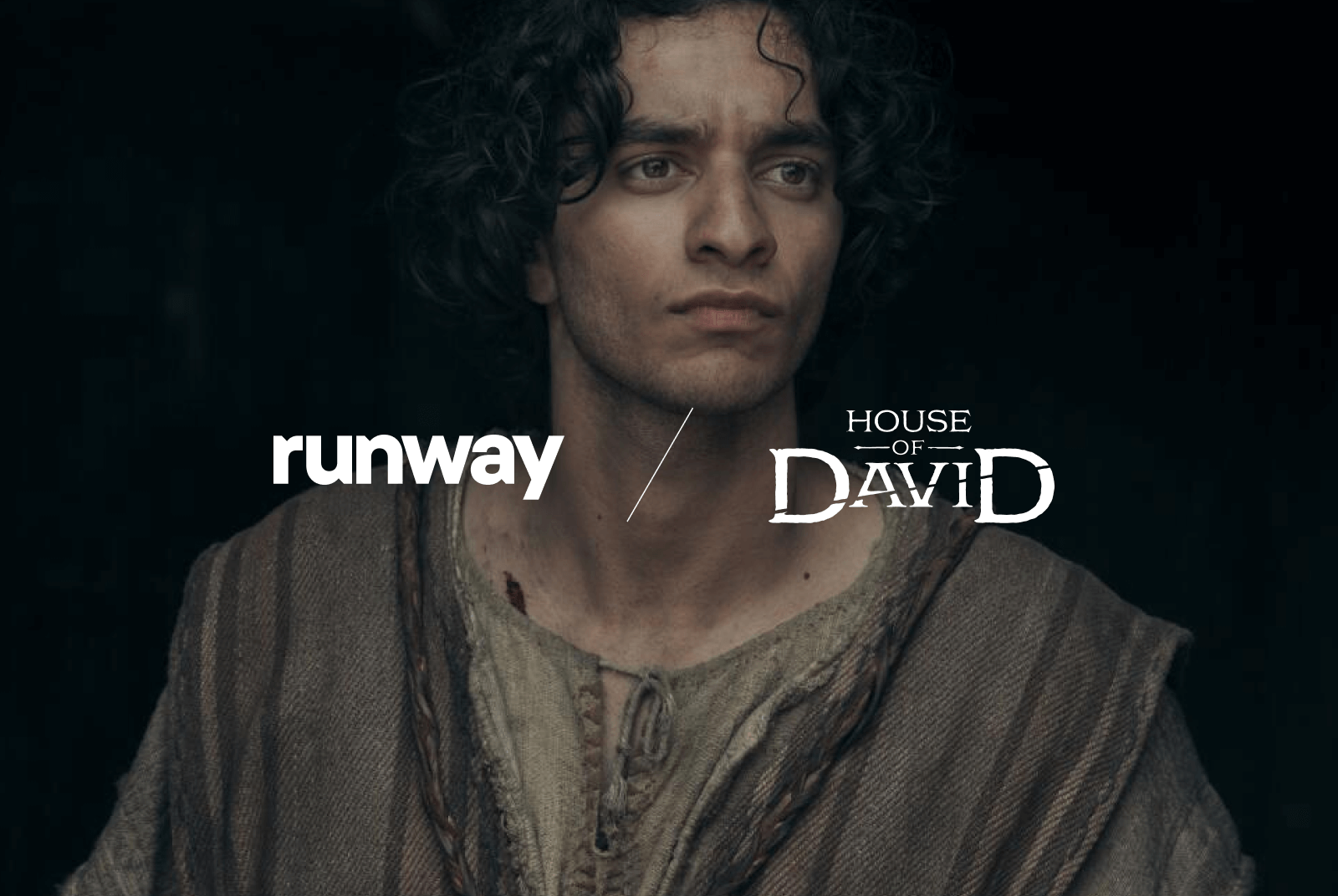

“Migration,” Jeremy’s latest short film, introduces an explorer who has stumbled upon a new universe full of intriguing worlds. He finds himself drawn to studying a herd of familiar creatures, leading him to discover secrets deeper within the planet. This film was Jeremy's first project where he was able to seamlessly integrate AI into his traditional process and team.
The “Migration” team consisted of Jeremy as director and co-writer, three cel animators, a type designer, a sound designer and a screenwriter/AI animator. Below we breakdown the process by which Jeremy and his team realized this ambitious two minute short film in under two months.
The character design in “Migration” is markedly simple. Although the mouth is one of the most expressive parts of a face, Jeremy felt that including eyes and a nose alone would communicate effectively underlining his frequent pull toward focused, clean design. The Explorer wears a white outfit to emulate that of an astronaut exploring in space, and to emphasize the purposeful progression of color and tone throughout the backgrounds in the film. There’s nothing that really defines the Explorer as anyone specific; this was intentional to ensure that the viewer could imagine themselves as the character, adding to the overall sense of adventure and discovery.


The team began with a script by Jeremy and co-writer Evan Johnson. They then pulled the best parts of the script into storyboards for the next two weeks, meticulously blocking the story beat by beat.

From there, things split into two avenues of exploration: character animation and world design. The team of three cel animators spent nearly four weeks rough animating all of the characters with painstaking manual detail. Realizing that the final animation timeline would be tight for the project, the team spent as much time as possible finessing the animations at this early stage of production.
In parallel, Evan - who co-wrote the script - began writing endless prompts to generate hundreds of background scenes for the team to work from. At times he’d be generating up to 200 images just for one background before landing on one. Though Jeremy had a clear vision, like with any production, continuity throughout scenes was a challenge to solve for. In the end, they were able to overcome this by assigning color palettes and themes to each scene which the team was able to prompt and curate for.
After generating the images, the team then used Gen-3 Alpha to animate them. For this project, Jeremy envisioned the backgrounds contributing to the film in an ambient, natural way in order to make the world feel “alive” (wind blowing in the grass, clouds drifting in the sky). Some of the animations did end up serving that original purpose, but it also became exciting at times to let the video model take control creatively. This would result in pockets of unexpected results that are otherwise time consuming to achieve with 3D animation alone. We see this play out in the bioluminescent cave scene toward the end of the film.
Once the character animations and background generations were completed, they were brought together for final compositing. In order to have the two styles to feel as one, the team hand animated contact shadows and interactions to connect the characters with the world around them.
During the final week, the team printed out every frame of the film, with the intention to hand draw on the frames before scanning them back to digital, for a tactile, paper animation look - something Jeremy has employed in much of his work. With time running out and tests not meeting his expectations, Jeremy quickly realized that this approach was taking away from what made the animation feel special - the combination of the hand animation characters with the generated environments. In the end, the team decided to pivot and not pursue the paper animation.
Throughout his career, Jeremy has always leaned toward experimentation and pushing his work. His design sensibilities consistently push him toward discovering new practices to effectively communicate concepts, and today one of the tools he is actively beginning to incorporate into his workflow is generative AI. He remains keenly aware that AI isn’t a one-touch solution, but rather a powerful tool for ideating and iterating ideas in real-time. And an incredibly valuable collaborator in the production process itself.
Watch “Migration” below.
See more of Jeremy's work at theartofsnap.com and @jeremyt_higgins.
If you are a professional director, producer, screenwriter or creative professional looking to tell new stories with an AI-augmented project in need of funding, we invite you to apply at runwayml.com/hundred-film-fund.


